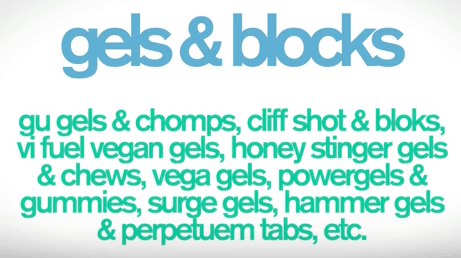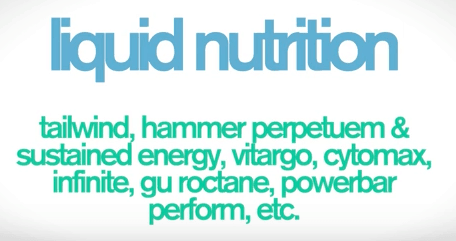f you’ve ever wondered what you should be eating on race day, then Ethan Newberry (a.k.a. the Ginger Runner) has got some advice you definitely don’t want to miss.
In this video, he shares some of his favorite foods and brands that will “get you to the finish line”, although you should also bear two things in mind:
- First, the market is constantly changing, so by the time you read this post and watch his video, there will already be a slew of new products available, and
- Second, he is just speaking from experience, and is not a certified or trained professional to give advice on what to eat
Things to keep in mind, according to Ethan:
- What you eat every day directly affects you on race day
- Everyone’s systems are completely different, so what works for one person may not work for another person
- What works for you may suddenly no longer work for you
- Know that your plan can and will change at any time, and be willing to adapt
- Try everything so you can figure out how your body processes different things and how it behaves
The Ginger Runner knows how many calories he needs per hour (200-300, depending on effort) and how much water he drinks per hour (20 oz). What it basically comes down to is that YOU need to figure out your own needs, because they vary from one person to another.
Once you know your numbers, you’ll have a better idea of what you need to take in on race day.
That being said, there are 4 sources of calories:
Real food and bars
Gels and blocks
Liquid nutrition
Miscellaneous
Real food and bars
Pros of getting your calories from real food and bars:
- You know the ingredients, especially if you made it yourself
- You have ultimate control, especially if you have dietary issues
- They are very filling; you can take in a lot of calories quickly with real food and bars
Cons:
- They tend to be very big and also heavy, limiting portability
- It’s very easy to loose count of the calories you’re taking in
ETHAN’S PICKS:

Gels and blocks
These are smaller, more portable versions of real foods.
Pros:
- They are small and light, which makes them very easy to carry
- There are lots of different flavors, from maple bacon to frappucino
- They’re cheap
- They go easier on the stomach than real food
Cons:
- They tend to contain a lot of sugar
- You have less control over the ingredients and ingredient sources
- These may be harder on the stomach for some people
ETHAN’S PICKS:

Liquid nutrition
This usually comes in tubs of powder and you add water, shake it, and there’s your calorie source.
Pros:
- It’s a one-stop-shop to give your body everything it needs that it has been losing ‑ they’ve got sodium, protein, amino acids, calories, etc.
- For some people it’s easier to digest
Cons:
- Portability ‑ there’s no way to carry a big tub of power with you while running
- You run the risk of over or underhydration, depending on how you dilute the liquid
- No matter how much you drink, you’re still left with a lingering hunger for real food
ETHAN’S PICKS:

It’s important to note that all of these are available in little portable packages. With that in mind, Ethan recommends taking it with you in a small Ziploc bag, although then you have to mix it on the run, which can be challenging.
Miscellaneous
This category comprises items that are complementary sources of calories.
Pros:
- These can hit the spot because you can replenish exactly what you need (sodium, electrolytes, etc.)
Cons:
- It’s another thing you have to carry
ETHAN’S PICKS:

The Ginger Runner’s Main Message:
There is no one solution that works for everyone.
You need to find what works for you.
For additional information on what to eat on race day, check out these great sources:
This article on Runner’s World offers a sample plan, which you can try out and adapt to your own needs. From how many carbs to eat per hour to how to chase each gel you eat, it’s got a lot of great information.
This other article on Runner’s World gives you the lowdown on high-octane fuels and even has a video with tips on where to carry your mid-run snacks.
This article on Runners Connect offers great advice about when to take fluids and how much, when and how to eat energy gels, among other topics, and will also connect you with other relevant articles on what to eat in the days leading up to the marathon and how to develop a marathon nutrition strategy.
This article from BBC Good Food takes a closer look at carbohydrates and proteins on race day, and also recommends pre-marathon meal plans.
Running for Fitness has advice on how much energy you need to take in when running and why you need to take in energy. This article also has some great tips for what to eat when you finish your marathon.
The Greatist has compiled a lit of the best foods to eat mid-run, which includes everything from iced green tea with honey, which can improve endurance and boost VO2 max, to dates, which have a lot of potassium and are easy to chew.

